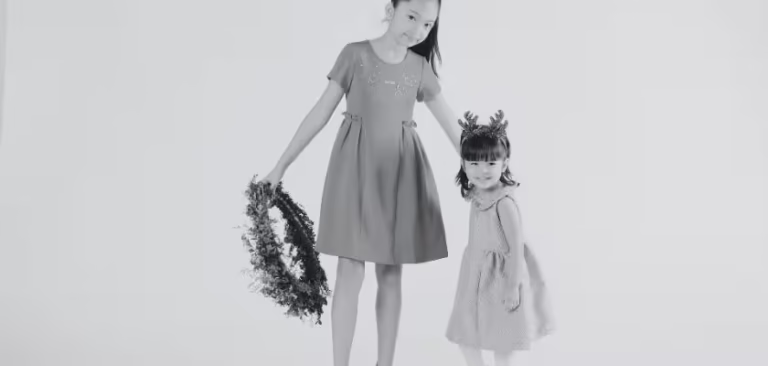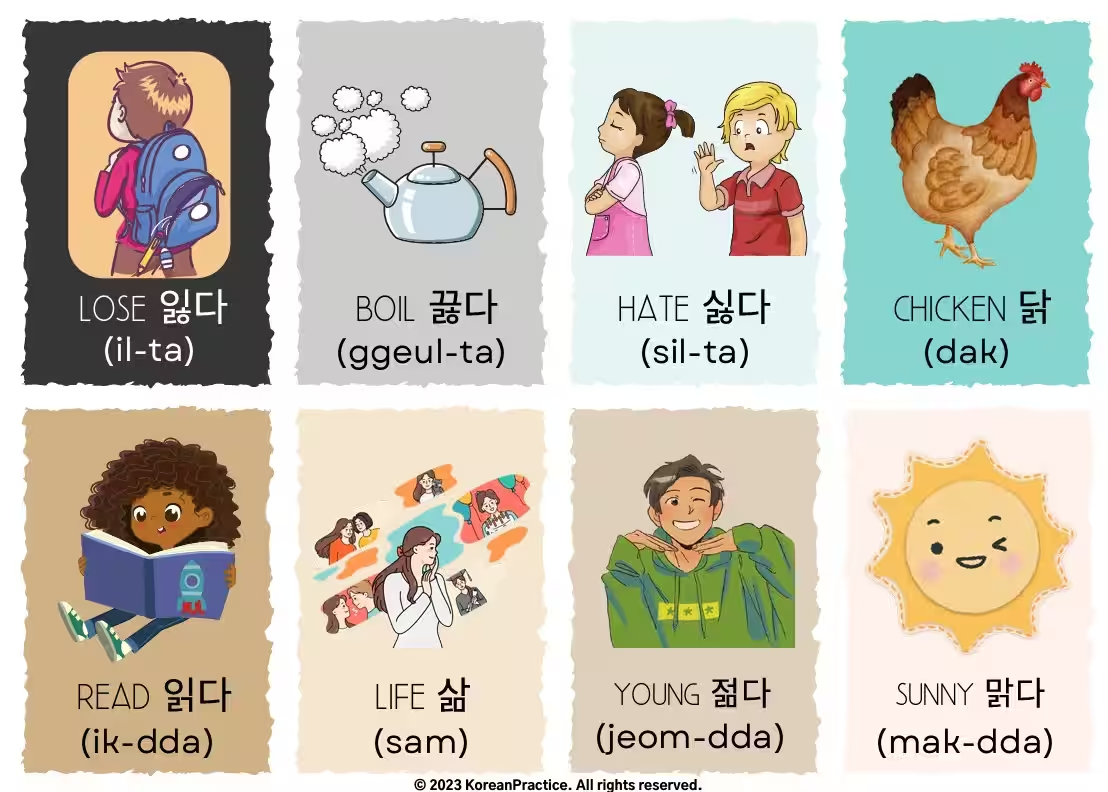Suh ChangWhoon
Written by 서 창훈, a certified Korean teacher with 14+ years of experience in Japan. He previously worked as a government officer, cybersecurity consultant, and English interpreter. Today, he teaches Korean in real classrooms without complex grammar explanations — instead, he trains students’ brains to speak naturally. His unique method is now the foundation of all his Korean courses.
Table of Contents
Understanding the Term Younger Sister in Korean Language
Learning a new language opens up a world of possibilities. If you’re interested in Korean, understanding family terms is crucial. One common term is for a younger sister in Korean language. Let’s explore how to express this relationship in Korean.
How to Say Younger Sister in Korean language
In Korean, the term for “younger sister” is 여동생. This word can be used by anyone, regardless of gender. Breaking it down, 동생 means “younger sibling,” while 여 specifies that the sibling is female.
However, in casual conversation, Koreans often drop the 여 and simply use 동생 to refer to any younger sibling, whether it’s a sister or a brother. For a younger brother, you could add 남 to make 남동생, but again, many just use 동생 for simplicity.
All of our courses are taught with the same systematic approach, like my younger sister in Korean language below.
Example
Original Korean Sentence
내 여동생과 함께 쇼핑하러 갔어요.
Pronunciation Guide
내 (nae) 여동생과 (yeo-dong-saeng-gwa) 함께 (ham-gge) 쇼핑하러 (syo-ping-ha-reo) 갓써요 (gat-sseo-yo).
Meaning and Context
내 (my) 여 (female) 동생 (younger sibling) 과 (with) 함께 (together) 쇼핑 (shopping) 하 (to do) 러 (in order to) 가 (to go) 았 (past tense) 어요 (I’m telling you polite and friendly).
Pronunciation Patterns for Conjugations
⊳ 가 + 았 = 갔
When rapidly pronounced, ‘가’ and ‘았’ naturally combine to form ‘갔’.
English Translation
I went shopping with my younger sister.
Literal Translation
(I) went in order to do shopping together with my younger sister.

This is just a small taste of my sentence breakdowns.
My “Story Style Breakdown™” method — where I teach grammar through simple, story-like sentence breakdowns—is only inside my course.
Most Korean courses stop at grammar. Mine goes beyond — with stories, breakdowns, and real practice to help you speak.
The Role of Honorifics in Korean Language
Honorifics are important in Korean culture. These honorifics are markers of respect and politeness. When talking to or about a younger sister in Korean language, you might not use strict honorifics.
Original Korean Sentence
잘 잤어? 아침 먹자.
Pronunciation Guide
잘 (jal) 잣써 (jat-sseo)? 아침 (a-chim) 먹짜 (meok-jja).
Meaning and Context
잘 (well) 자 (to sleep) 았 (past tense) 어 (I’m asking you casually)? 아침 (breakfast) 먹 (to eat) 자 (let’s; in a casual way).
Pronunciation Patterns for Conjugations
⊳ 자 + 았 = 잤
When rapidly pronounced, ‘자’ and ‘았’ naturally combine to form ‘잤’.
English Translation
Did you sleep well? Let’s have breakfast.
Literal Translation
Slept well? Let’s eat breakfast.
Cultural Significance of Younger Sister
Family holds a significant place in Korean culture. The relationship with a younger sister in Korean language often involves guidance and care. This bond is rooted in Confucian values, emphasizing respect within the family hierarchy.
In Korean culture, familial terms hold significant weight and convey layers of emotion and respect. The term ‘여동생’ (younger sister in Korean language), which translates to ‘younger sister’, embodies not only the relationship between siblings but also the broader cultural ethos surrounding family dynamics. Within families, Koreans place a strong emphasis on respect, hierarchy, and affection. This is reflected in the language used to address family members, where age and relational context greatly influence the choice of words.
When a person uses ‘여동생’ (little sister in Korean language), they are expressing not just a familial connection but also connotations of care, protection, and affection. This term signifies that the elder sibling assumes a protective and guiding role towards their little sister, showcasing the responsibilities often expected of older siblings in traditional families. Additionally, such terms also highlight the emotional bonds that exist between siblings, reinforcing feelings of loyalty and support that are pivotal in Korean interpersonal relationships.
Example
Original Korean Sentence
여동생이 정말 귀여워요.
Pronunciation Guide
여동생이 (yeo-dong-saeng-i) 정말 (jeong-mal) 귀여워요 (gwi-yeo-wo-yo).
Meaning and Context
여 (female) 동생 (younger sibling) 이 (my subject is my younger sister) 정말 (really) 귀엽 (to be cute) 어요 (is; I’m telling you polite and friendly).
Pronunciation Patterns for Conjugations
⊳ 귀엽 + 어요 = 귀여워요
When rapidly pronounced, ‘귀엽’ and ‘어요’ naturally combine to form ‘귀여워요’.
English Translation
My younger sister is really cute.
Literal Translation
(My) younger sister is really cute.
Family Matters
Understanding how to use family terms in daily conversations is essential. When speaking to friends or in informal settings, you might refer to your younger sister in Korean language with just her name or a nickname. But when introducing her to others, saying “여동생” shows clarity and respect.
Example
Original Korean Sentence
어제 여동생이랑 같이 영화를 봤어요.
Pronunciation Guide
어제 (eo-je) 여동생이랑 (yeo-dong-saeng-i-rang) 가치 (ga-chi) 영화를 (yeong-hwa-reul) 봣써요 (bwat-sseo-yo).
Meaning and Context
어제 (yesterday) 여동생 (younger sister) 이랑 (with) 같이 (together) 영화 (movie) 를 (my object is a movie) 보 (to watch) 았 (past tense) 어요 (I’m telling you polite and friendly).
Pronunciation Patterns for Conjugations
⊳ 보 + 았 = 봤
When rapidly pronounced, ‘보’ and ‘았’ naturally combine to form ‘봤’.
English Translation
I watched a movie with my younger sister yesterday.
Literal Translation
(I) watched movie together with younger sister yesterday.
Practical Usage in Everyday Conversations
To effectively master the term ‘여동생’ (younger sister) and its relevant expressions in Korean, engaging in structured practice exercises can significantly enhance your learning experience. These exercises will not only aid in vocabulary retention but also improve overall language proficiency.
Start with a fill-in-the-blank exercise focusing on essential vocabulary related to ‘여동생.’ For example, consider the sentence: “나의 여동생은 ____을 좋아해요” (My younger sister likes ____). Here, you can fill in the blank with various foods, activities, or hobbies, such as “사과” (apple) or “영화” (movies). This not only familiarizes you with the term ‘여동생’ but encourages the integration of new vocabulary.
Additionally, practicing sentence construction is crucial. Here’s a task: create five sentences using ‘여동생’ in different contexts. For instance, you could write, “여동생이 나에게 선물을 줬어요” (My younger sister gave me a gift) to highlight familial relationships. This exercise allows you to apply what you have learned and reinforces the structure of Korean sentences while using the term effectively.
Another beneficial activity involves translating simple sentences from your native language into Korean, focusing on the word ‘여동생.’ For example, translate “My younger sister is talented” into Korean: “여동생이 재능 있어요.” This exercise promotes active engagement with the language and helps solidify your understanding of the term in various contexts.
Lastly, consider pairing up with a study partner or language exchange buddy. You can take turns quizzing each other on vocabulary related to ‘여동생’ and encourage the use of complete sentences in conversation. This collaborative approach not only makes learning more interactive but also provides immediate feedback, enhancing retention.
FAQs (What You Might Still Wonder About)
1. ❓ Can I just say “동생” instead of “여동생”?
Yes! In casual conversation, Koreans often omit 여 and simply say 동생, which means “younger sibling” and can refer to either a sister or brother.
2. ❓ Are there different words based on the speaker’s gender?
For younger sister, 여동생 is universal and doesn’t depend on the speaker’s gender. However, for older sister, women use 언니 (eonni) and men use 누나 (nuna).
3. ❓ How do I say “my younger sister” in a polite sentence?
A formal example: “저의 여동생은 대학교에 다니고 있어요.” (Jeoui yeodongsaeng-eun daehakgyo-e danigo isseoyo.) → “My younger sister is attending college.”
4. ❓ How do I refer to younger sisters in extended or in-law relationships?
Variations include: Step‑younger‑sister: 의붓동생 (uibutdongsaeng) Half‑younger‑sister: 이복동생 (ibokdongsaeng) Sister‑in‑law (husband’s brother’s wife or wife’s younger sister): terms differ depending on context, like 동서 or 처제.
🎁 Free Korean Flashcard
Conclusion: Learn How to Say Younger Sister in Korean Language
Mastering family terms like younger sister in Korean language is a small but essential step in learning Korean. It helps you navigate relationships and conversations more naturally. Start incorporating these terms into your daily practice, and you’ll see improvements in your Korean language skills.
Understanding these nuances will not only help you speak better Korean but also connect more deeply with Korean culture. Keep practicing, and soon enough, you’ll be using these younger sister in Korean language as if they were your own!



